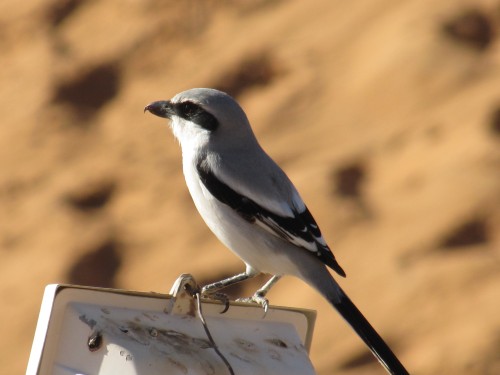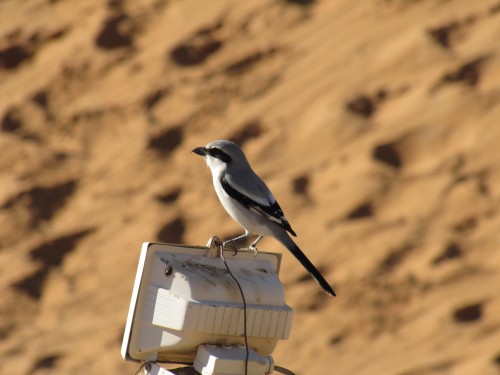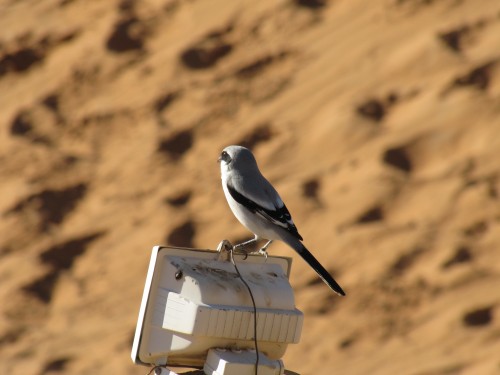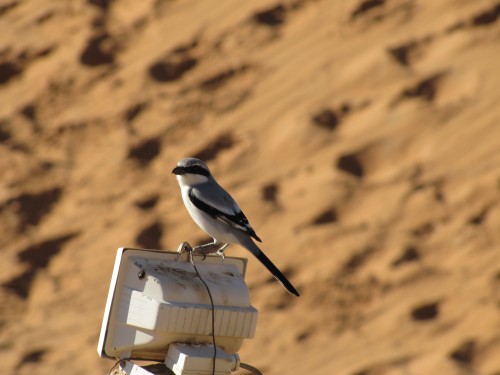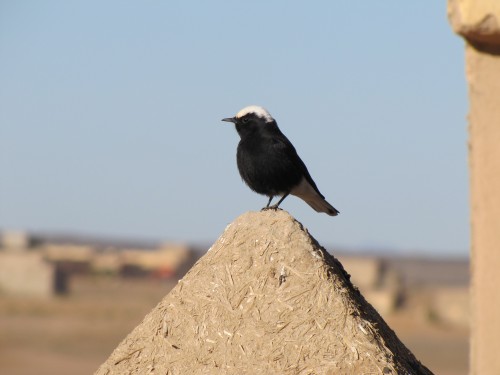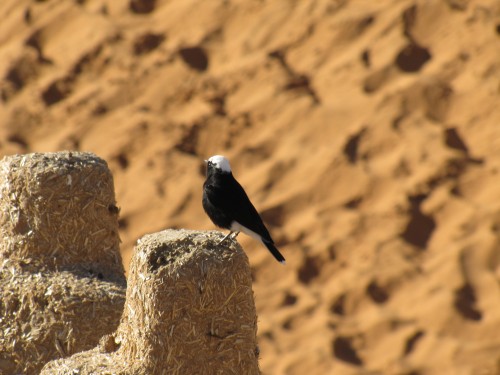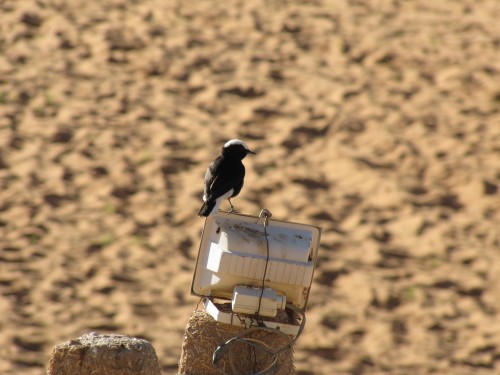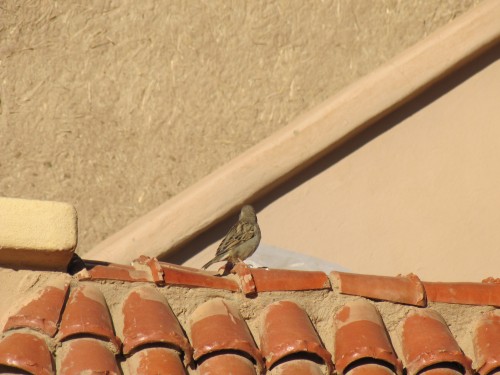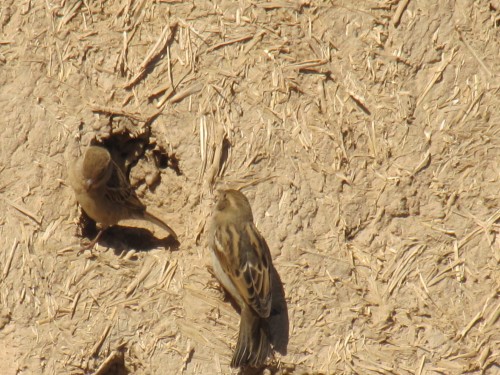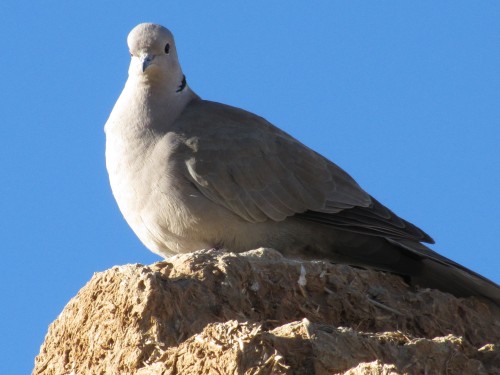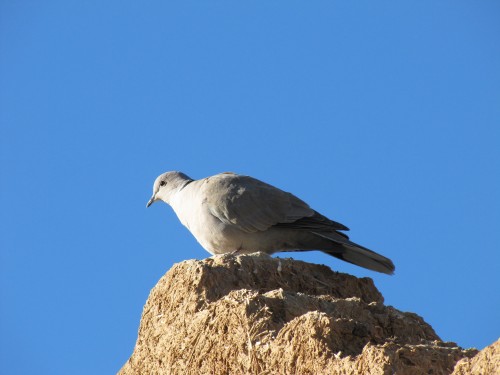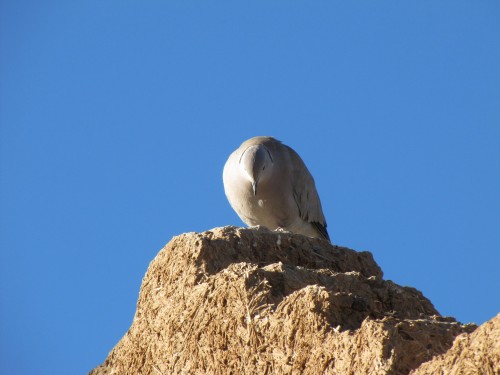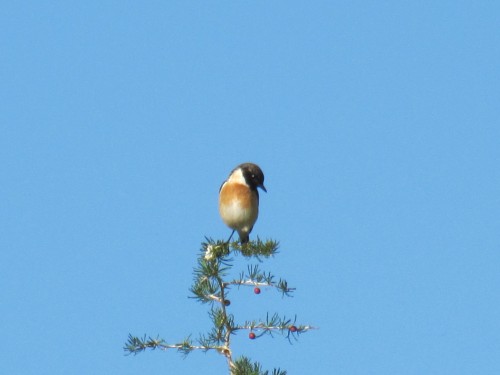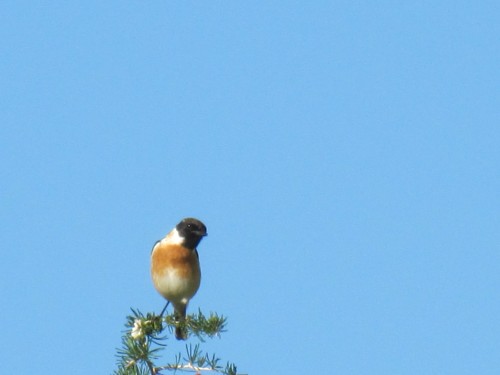Southern Grey Shrike, Morocco
Several years ago we visited Morocco and fell in love with the country. It is a land of great contrasts and beauty, and we found the people to be friendly and welcoming. During our tour, we visited many wonderful and beautiful places. One of those places was the Sahara Desert. It did not disappoint. Over recent weeks, I have posted a few of the bird photos I took at the time.
The highlight of our visit to the desert was a camel ride into the Sahara on sunset. This was on Christmas Eve, so it certainly was a Christmas with a difference and certainly one to remember. We slept in a Berber tent in the desert overnight. The next morning – Christmas Day – we rode back to a local hotel where we had a late breakfast. While we were eating I managed some good photos of several local bird species. You can read about them here and here and here.
Today I feature another bird species seen at that location, the beautiful Southern Grey Shrike. This bird posed cooperatively for me on a light fitting just a few metres from where we were sitting. I love it when the birds pose like that – so considerate of them. This species, a member of the shrike family of birds, is found in northern Africa (except in the heart of the Sahara), Spain and through to Pakistan and India in the east. It is a passerine bird of medium size. It eats rodents, insects and will even take small birds as a part of its diet.
Further reading:
- Southern Grey Shrike – the article on Wikipedia
- Eurasian Collared Dove – an article about another species I photographed in the same location
- White-crowned Black Wheatear in the Sahara
White-crowned Black Wheatear in the Sahara
On our tour of Morocco a few years ago we stopped for breakfast in the garden of an auberge (hotel) on the fringe of the Sahara Desert. We had spent the night in a Berber tent in the desert. It happened to be Christmas Eve – one we will not forget because it was so different. During breakfast, I was able to add quite a few photos of birds hanging around the gardens and buildings of the hotel.
One of the delightful birds I saw and photographed was the White-crowned Black Wheatear (Oenanthe leucopyga). This was a “lifer” – the first time I had ever seen this species in my life. I was so pleased to get several good photos of the bird. At the time, I didn’t know what it was and I have needed to do plenty of research here at home, both for this species, and for many others seen on the trip.
I have discovered that wheatears were once regarded as members of the Thrush family. In more recent times the experts have agreed that they are, in fact, members of the Old World Flycatcher family of birds.
They breed in the stony deserts from the Sahara across northern parts of Africa and as far as Iraq. It also occurs as a vagrant in parts of Europe, even occasionally in Great Britain. It makes a nest in the crevices of rocks or walls.
This species eats mainly insects. It also has a loud song, but the one I saw wasn’t calling.
You can read more about this species on Wikipedia here.
House Sparrows in the Sahara
House Sparrows are an often over-looked bird species.
In my last post, I wrote about a visit a few years ago to the Sahara Desert in Morocco. In that post, I shared photos of the Eurasian Collared Dove I saw in Merzouga on the edge of the Sahara Desert. My wife, my daughter and I were on a tour of Morocco. The emphasis was on being tourists. Despite this, I was also on the lookout for opportunities to see new birds – any birds – and to get photographs of as many as possible.
After our camel ride into the Sahara Desert on sunset, we stayed in a Berber tent on Christmas Eve. Pre-dawn on Christmas Day saw the group staggering up a nearby sand dune to witness the sun rising over the desert, a truly wonderful experience. After riding out of the desert on camels again – such uncomfortable animals – we had breakfast. This sumptuous meal was in the grounds of a nearby hotel.
While having breakfast I was able to photograph a small number of birds nearby, including the female House Sparrows shown in today’s post. I found that this is a common species throughout Morocco. I recorded it in many places, including the bigger cities like Casablanca through to smaller rural villages.
I even noticed a small flock of them in the few trees near our campsite out in the desert. There was obviously enough food around to sustain a small population a considerable distance from houses. I find this is also true of this species here in Australia. I have seen quite large flocks – up to many dozens or more – quite some distance from human habitation, their preferred habitat. The small flock I saw in the desert had the advantage of plenty of grasses on and between the sand dunes nearby, as illustrated by these photos.
I am intrigued by the photo below. This shows two female sparrows at a hollow in the mud and straw wall of the building near where we had breakfast. I couldn’t tell whether they had made the hollow, or some other species had done it. It reminded me of the House Sparrows I encountered when I was a child. I grew up on a wheat and sheep farm in the Murray Mallee district of South Australia. The plentiful sparrows often made small nesting tunnels in the straw-thatched roof of the cow shed, as well as the roof of a hay shed.
Eurasian Collared Dove in the Sahara
On another of my sites (Trevor’s Travels) I have been writing about a tour of Morocco I undertook several years ago. I have, in recent days, finally got around to posting some of the many photos taken on that trip, along with detailed descriptions of what we did and saw. While looking at the photos I found some quite acceptable bird photos.Whenever I could get photos of the local birds, I took them. Identifying them has taken quite a while
Whenever I could get photos of the local birds, I took them. Identifying them has taken quite a while, mainly because I am not very familiar with the birds of Morocco. Over the coming days, I plan to post a few of these photos, along with some information about them.
During our tour, my family and I went on a camel ride into the Sahara Desert. This was at the locality known as Merzouga in the eastern part of the country. I must say that the desert is spectacular; I’ve shared many of the photos on my travel site. We rode the camels into the desert on Christmas Eve, staying in a Berber tent in the desert overnight. It was an unforgettable experience. I saw a few birds on the camels ride, but the moving back of such an animal is far from being an ideal photography platform. In fact, all my bird photos taken on the camel ride were too blurry and unidentifiable. Camel riding is also very uncomfortable! Enough said.
The next morning we rode (with more discomfort) through more spectacular sun dunes, deep red in the early morning sun. We ate a late breakfast at one of the local hotels. It was while having breakfast that I saw several species new to me.
The first one, featured today, was the Eurasian Collared Dove. This lovely dove is found extensively throughout Europe, Asia and has been introduced into North America. It is also found in the northern edges of Africa, including Morocco.
Further reading:
- Eurasian Collared Dove – the excellent article on this species on Wikipedia.
- Plants in the Sahara Desert
- Common Redstart, Volubilis, Morocco
- Grey Heron, Meknes, Morocco
- White Storks in Morocco
Common Redstart, Volubilis, Morocco
On route from Meknes to Fes on our tour of Morocco we stopped to inspect the ancient Roman ruins of Volubilis. This was a wonderful introduction to the oldest structures my wife and I have ever seen. It was fascinating, made even more significant in that it was one of many UNESCO World heritage Sites we visited during our tour of Morocco and Spain.
Because the ruins are in the countryside with farmland all around, I managed to see a few birds – in between absorbing the experience of seeing these amazing ruins and taking heaps of photos.
One of the first species I saw was this Common Redstart, a new species for me, that is, it was the first time I had seen this species in my life. It posed nicely for me in clear view. On this leg of the trip I didn’t have a field guide to help me identify the birds I saw. I relied on taking reasobale photos of the birds I saw. It was only when I arrived back home in Australia that I was able to find out the names of the birds seen during this part of our holiday. I must say that some have been a little hard tracking down. Most, however, are covered very well by online sites with good photos. It has enabled me to wander down memory lane time and again as I look at my shots, and remember all the highlights of the trip – of which there were many.
Note: this article was updated and new material added on 12th March 2016.
